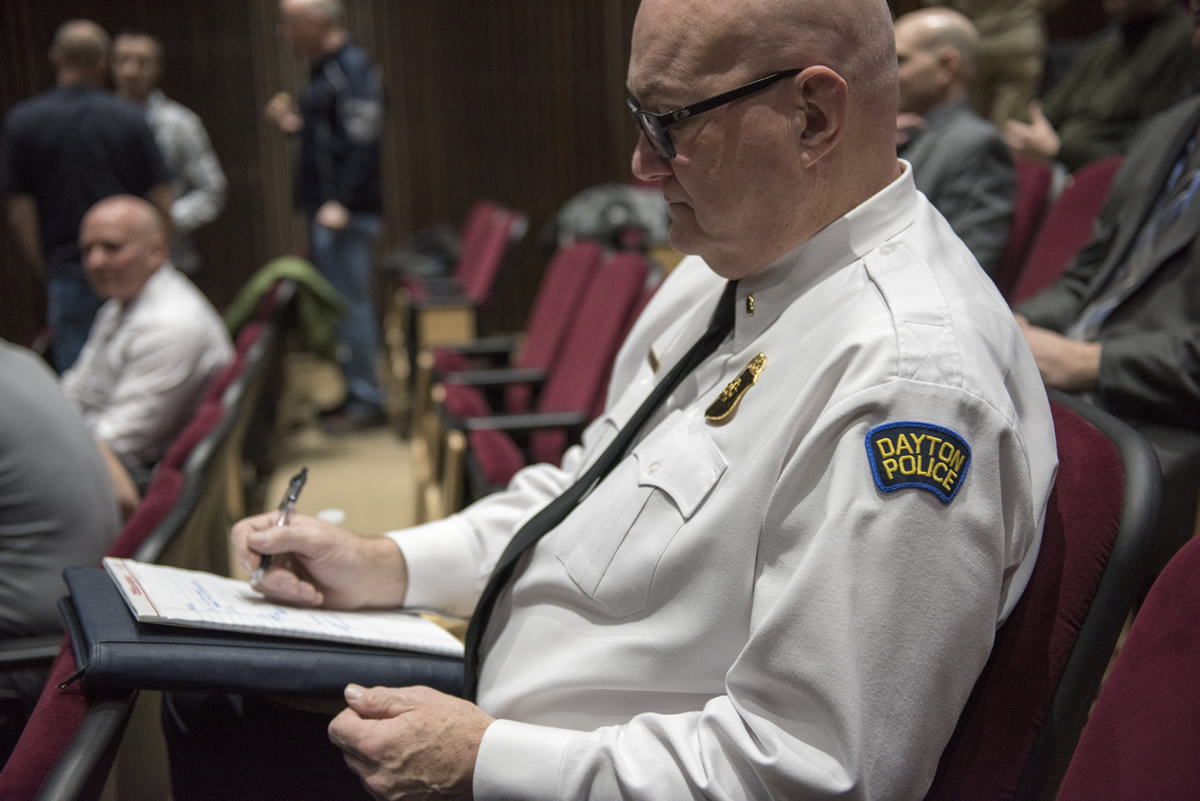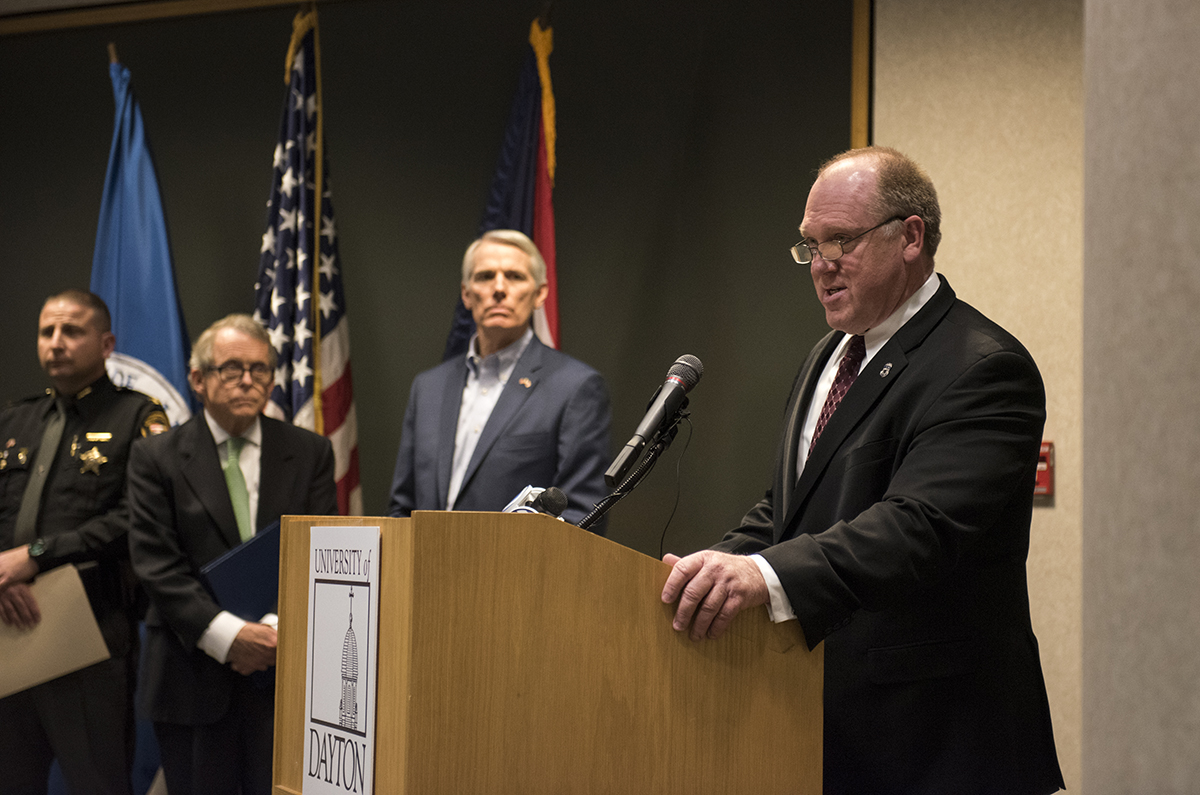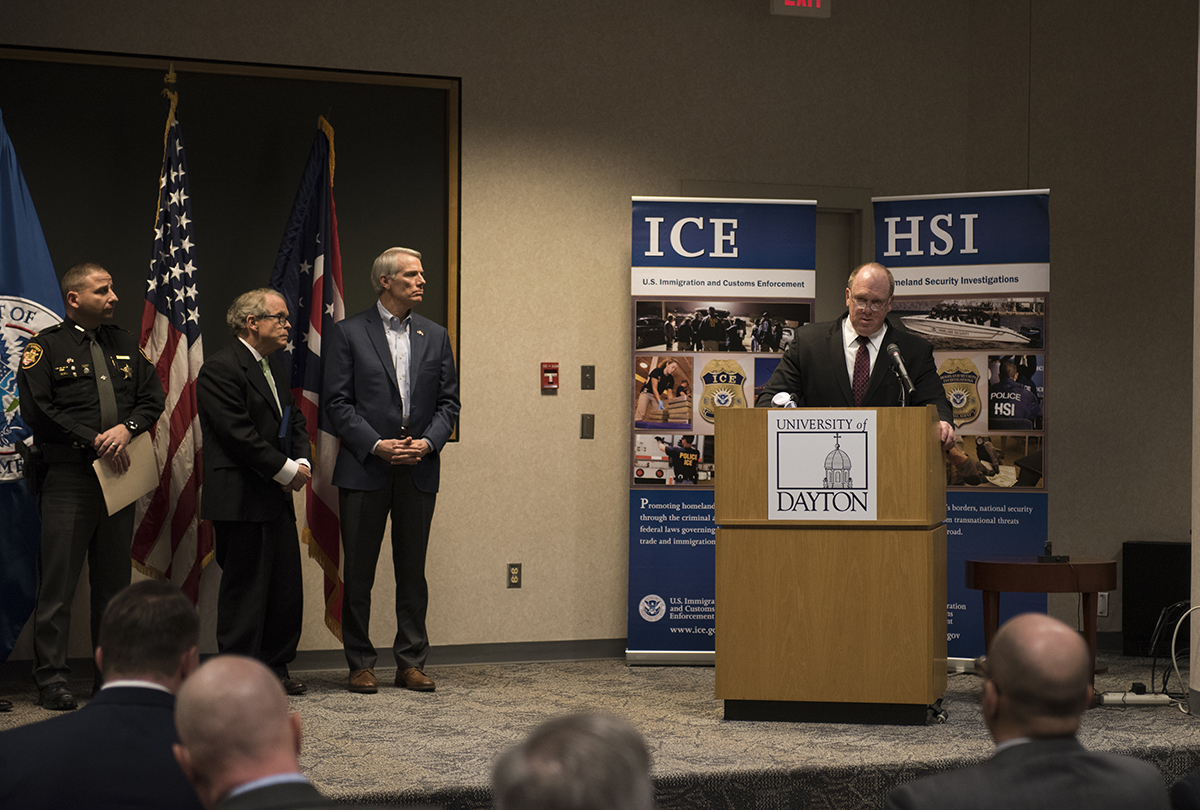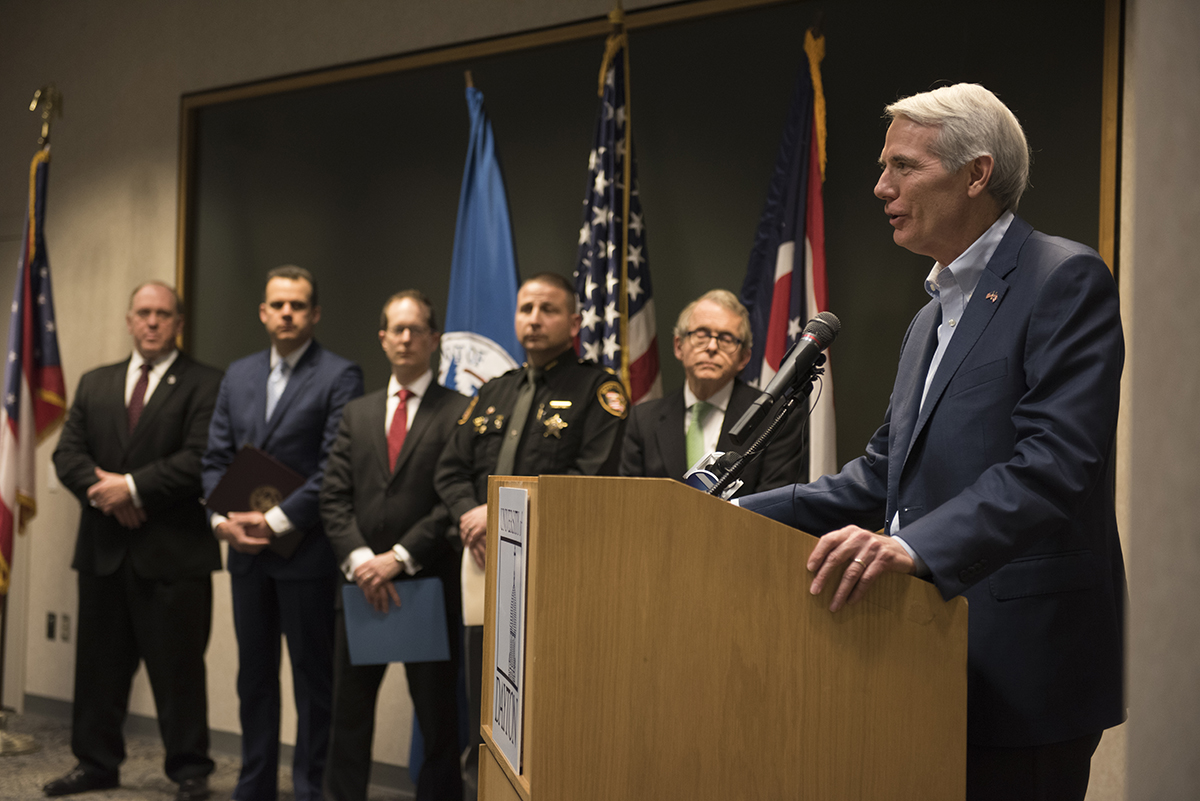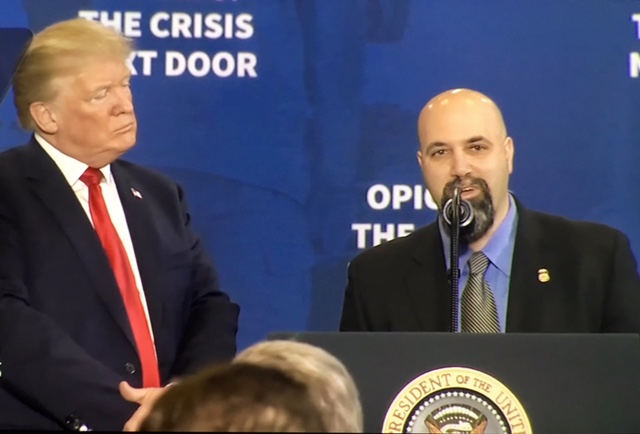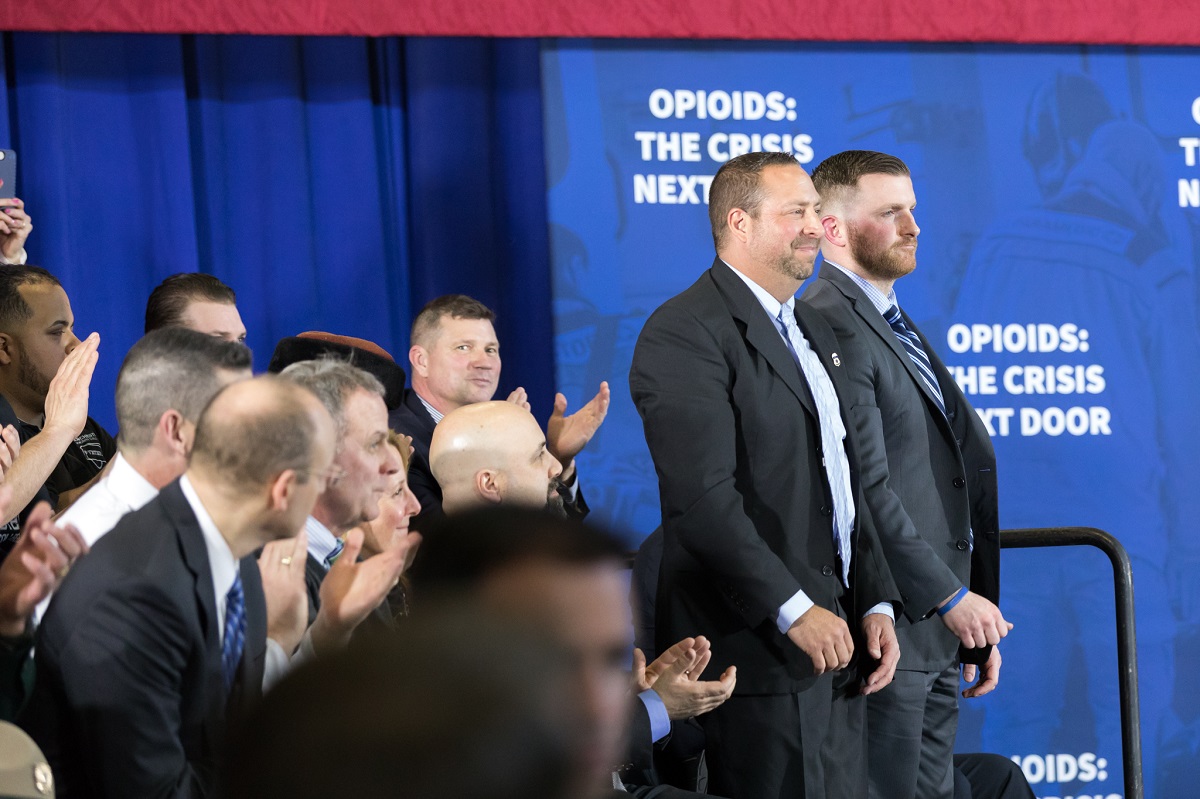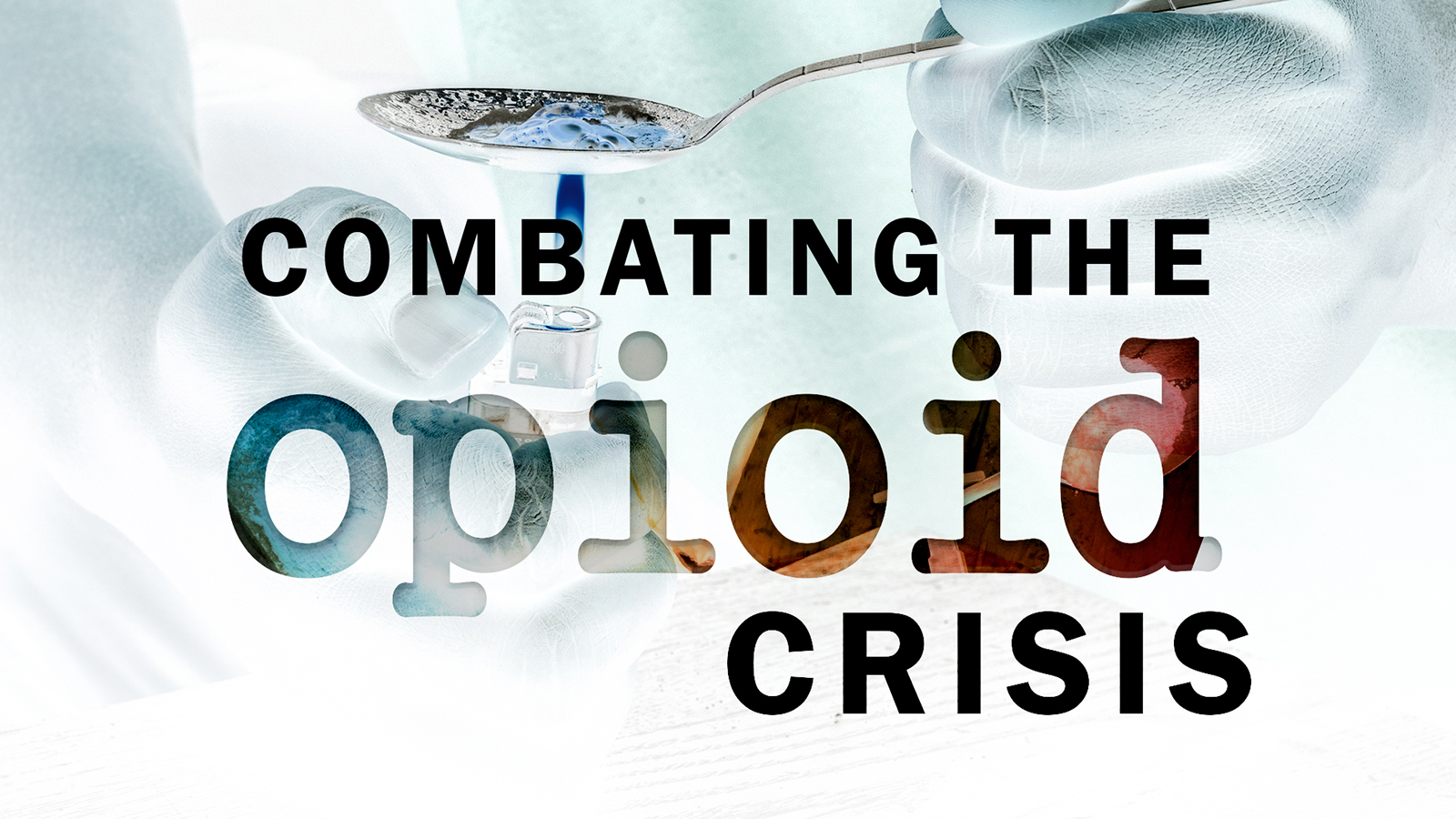
In 1987, the Partnership for a Drug-Free America launched an anti-narcotics campaign aimed at educating the public about the dangers of drug use. In the 30-second ad, an egg represented a person’s brain and a hot frying pan represented drugs. The spokesman cracked the egg and poured it in the pan, causing the egg to fry.
“That commercial resonated with people, especially with teenagers” said Greg Nevano, U.S. Immigration and Customs Enforcement’s (ICE) Homeland Security Investigations (HSI) Deputy Assistant Director, Illicit Trade, Travel and Finance Division. “The more education and public service announcements we can have out there teaching kids and parents [about the dangers of drugs], the better.”
For law enforcement, the fight against narcotics continues. In 2016, nearly 30 years later, more than 20,000 Americans were killed by fentanyl and fentanyl analogues, and that number continues to rise. Fentanyl, a synthetic opioid, is 50 times more potent than heroin and 100 times more potent than morphine. According to Drug Enforcement Administration estimates, one kilogram of fentanyl can produce 1 million to 1.5 million pill dosage units.
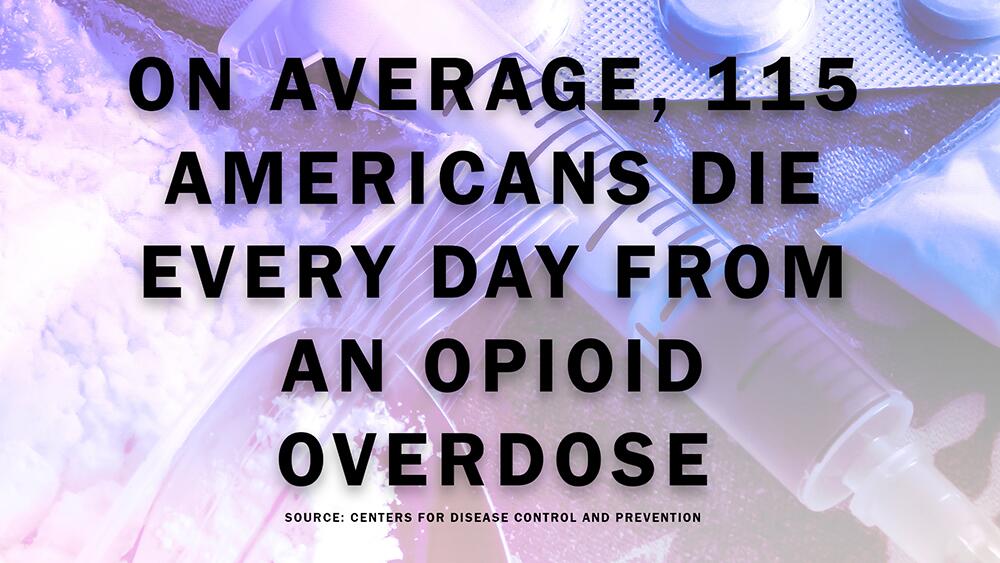
In the Internet age, accessibility and e-commerce has made the fight to combat opioids harder than ever. The typical dealer selling deadly opioids does not fit a specific profile, which is a challenge for law enforcement. Now, a dealer can be anyone with access to the Internet. Buyers can visit Dark Net sites anonymously using special browsers and make purchases with virtual currencies like Bitcoin, making transactions difficult to trace. In contrast, people who have been addicted to heroin need to go out and find street vendors and pushers and buy from them. With opioids, users can order from their living room and never go out to the street.
“They can get their fix just by ordering it online for much cheaper and get a much more potent dosage. I think that’s what the phenomenon is today,” Nevano said. “You can search fentanyl and any other opioid, find it and order it online. It makes it very challenging because you don’t need that middle person that law enforcement would normally target. The hierarchy of the traditional cartel structure is not there.”
Illicit Trade, Travel and Finance Division, HSI
Combating the Crisis
In Fiscal Year (FY) 2017, HSI seized nearly 2,400 pounds of fentanyl nationally. HSI has experienced a drastic increase in fentanyl related arrests and seizures in the last three years. As agency personnel have been working to combat this epidemic, one thing has become very clear – law enforcement can’t arrest their way out of the problem. While the investigation, disruption and dismantling of transnational criminal organizations that illicitly introduce fentanyl, heroin and other dangerous opioids into the United States are chief among HSI’s mission areas, it’s only one step. An informed public, willing partners and engaged treatment and prevention community are also vital to combating the problem.
“Law enforcement can only play a certain role in it. There has to be many other facets to help stop this crisis,” Nevano said. “There needs to be a whole of government approach.”
The epidemic has become so bad that in October 2017, President Donald J. Trump signed an order declaring the opioid crisis a national public health emergency.
In his order, the president directed ICE to increase the number of Border Enforcement Task Forces (BEST), a primary resource utilized to attack this crisis. In FY 2017 HSI increased its BEST teams to 58. BESTs, along with High Intensity Drug Trafficking Areas (HIDTA), Organized Crime Drug Enforcement Task Force (OCDETF) and Special Operations Division are all key components HSI relies on to strengthen efforts related to drug trafficking. BESTs leverage the participation of more than 1,000 federal, state, local and foreign law enforcement agents and officers representing over 100 law enforcement agencies that target opioid smuggling on a daily basis in both the international mail and express consignment channels.
“When the president comes out with an executive order and mandates that HSI prioritizes its investigative efforts in a particular area such as opioid interdiction, we must prioritize this request,” Nevano said. “Saving just one life is a success, but we can’t just stop there. We need to aggressively continue to investigate and bring to justice those who are contributing to this epidemic.”
To do its part, HSI has established a three-pronged approach to combating opioids:
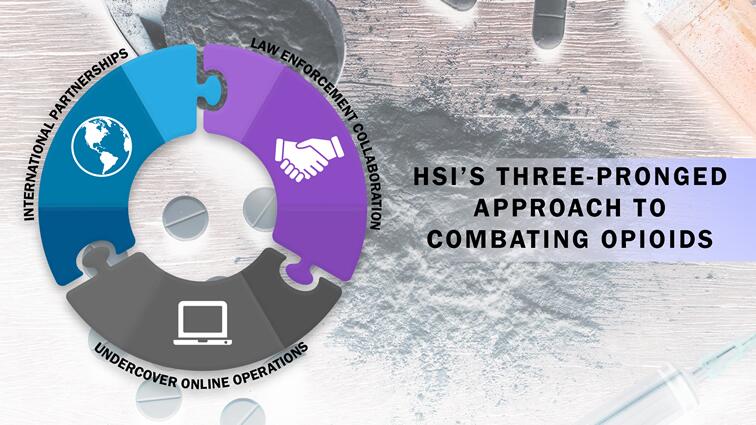
A Nationwide Epidemic
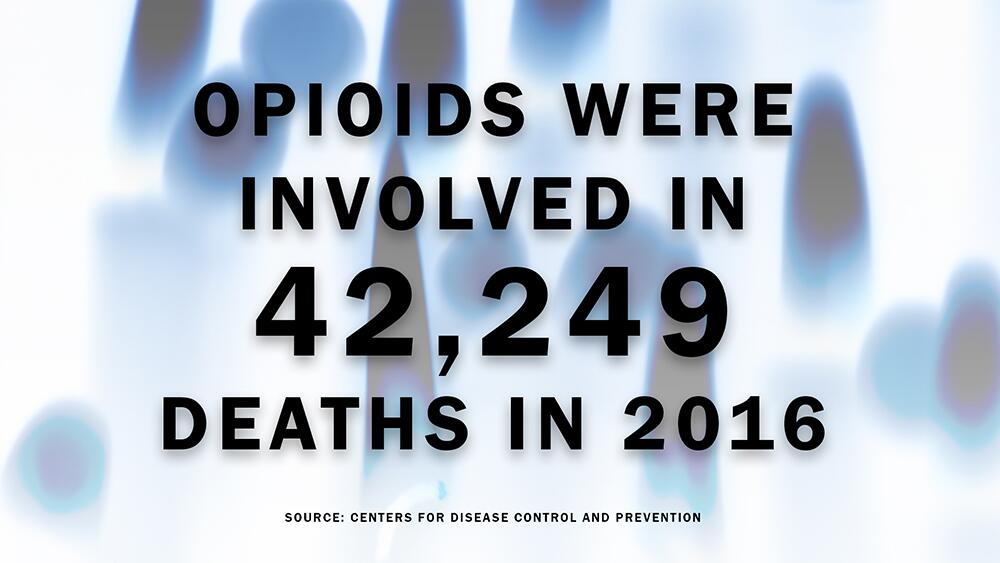
The opioid epidemic is not specific to one location, it’s everywhere. Nearly every American community has been impacted by the crisis. The primary source of these drugs is China. According to the U.S.-China Economic and Security Review Commission, mass quantities of fentanyl are being produced in China and brought illegally to the United States, contributing to the growing crisis in the U.S. The rise of fentanyl in the United States can be traced back to China’s large chemical and pharmaceutical industries, which manufacture vast quantities of the drug and its analogues to export to the western hemisphere with little regulatory oversight.
Because of the U.S. nexus to the border, and the mandate to enforce more than 400 federal statutes, ICE’s role in the president’s strategy starts well beyond the borders in an effort to prevent dangerous drugs and those engaged in the trafficking and distribution of contraband from reaching our shores. In order to continue the success of those initiatives and further seizures into identifying the criminal organizations responsible for the opioid crisis, HSI is streamlining its package interdiction efforts and working closely with law enforcement partners and intelligence centers.
“Stopping these drugs from coming in is one of the biggest challenges we face. It requires the solicitation and cooperation from our international partners,” Nevano said. “That’s the end goal to do more with our international partners. We are trying to develop and build relationships with China to ensure that these opioids are controlled.”
In working to combat the crisis, data allows investigators to identity the “hot spots,” which are certain areas of the country where there are higher levels of overdose deaths. That’s a sign that those areas that are afflicted with addiction.
In Ohio alone, unintentional drug-related overdoses caused the death of 4,050 residents in 2016. To address this deadly scourge, in Ohio, HSI completely shifted its investigative portfolio. In the last year, the agency tripled its focus on drug trafficking-related probes, which now account for more than 50 percent of all cases. HSI has doubled the number of special agents assigned to work these complex cases.
Because state and local officials don’t always have the funding and resources, federal partners, like HSI, are often brought in to provide operational support and subject matter expertise. By tripling HSI’s resources in a selected region, it further enhances the existing framework of law enforcement support in place. The reality is the more resources that are brought forth, the better the outcome for the communities most affected by opioids.
Next Steps
‘Why didn’t we see this coming?’
‘What else is next?’
‘What is the next fentanyl out there?’
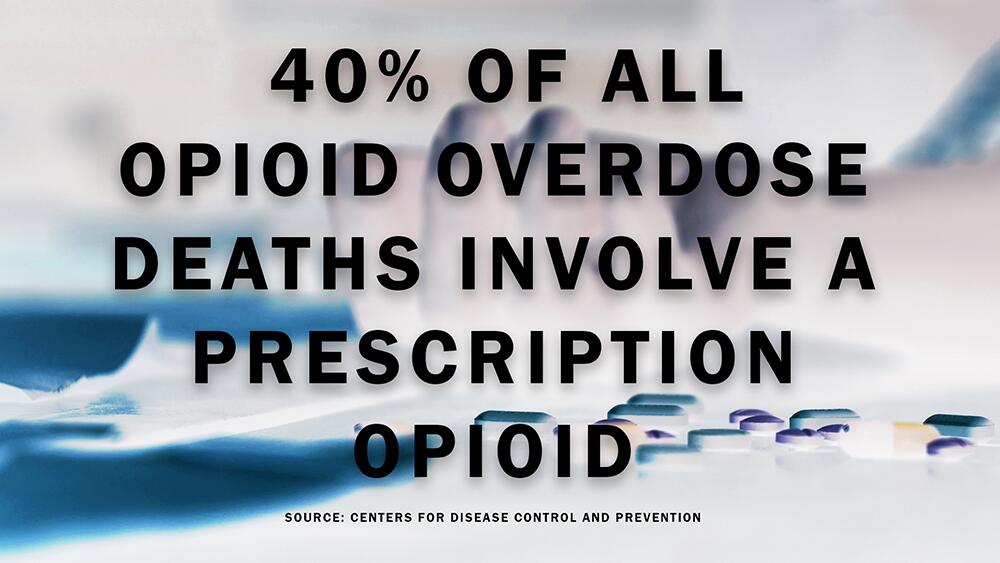
Law enforcement officials face many questions when dealing with the opioid crisis. To face this epidemic now and in the future, HSI personnel have to be prepared. That preparation will require leveraging critical partnerships with state, local and federal partners to maximize its impact on the operation of transnational criminal organizations within various communities. Since October 2017, HSI has trained approximately 800 investigators around the country. During the week of March 12, HSI Detroit and ICE’s Cyber Crimes Center will provide free Dark Net and Virtual Currencies training for more than 500 law enforcement personnel in Ohio and Michigan. The training will have an emphasis on illicit payment networks and financial transactions associated with fentanyl smuggling and distribution. By the end of FY 2018, HSI anticipates to train more than 1,500 investigators.
Spreading the Word
ICE hosted a press conference March 16 with acting ICE Deputy Director and Senior Official Performing the Duties of the Director Thomas D. Homan and several elected officials from the state.
Press Conference
President Recognizes Critical Role of ICE
Highlighting the major efforts the administration is dedicating to combating the opioid drugs crisis, President Donald J. Trump held a policy forum on “Opioids: The Crisis Next Door” at Manchester Community College on Monday, March 19, 2018 in Manchester, New Hampshire.
The President recognized ICE agency efforts overall and specifically recognized HSI Manchester for its critical role as part of law enforcement efforts in the region along with key local, state and federal law enforcement partners in fighting the ongoing crisis.
Among those singled out for special recognition by the President included HSI Manchester Special Agents Derek Dunn and Ronald Morin for their roles in several highly-successful narcotics and human trafficking investigations in Massachusetts and in New Hampshire.
Also attending were local, state and federal law enforcement leadership engaged in the fight against the opioids crisis including DHS Secretary Kirstjen Nielsen, U.S. Attorney General Jeff Sessions, New Hampshire Governor Chris Sununu, HSI-Boston Acting Special Agent In Charge Michael Shea, HSI- Boston Assistant Special Agent in Charge Bart Cahill, and HSI Manchester Resident Agent In Charge Michael Posanka.
For more information on what the administration is doing to combat the opioids crisis visit https://crisisnextdoor.trumpwhitehouse.archives.gov/.
For more information on what the administration is doing to combat the opioids crisis visit CDC's Opioid page.

